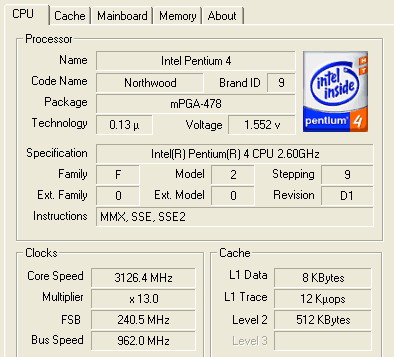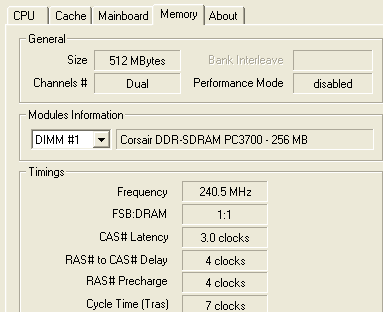Systems setup and notes
Here's a quick rundown of the test system should you wish to compare benchmark results with your own.Scan 3XS-OC overclocked system running at 3126.7MHz.
MESH Matrix 64 3200+ E-JOY (1002 BETA 009 BIOS) - full specifications here
Evesham Axis 64 3200 - full specifications here
------------------------------------------------------------------------------------
Comparison HEXUS system
Intel Pentium 4 3.2GHz CPU with retail fan
DFI LANPARTY 865PE
2 x 512MB TwinMOS PC3200 RAM (2.5-3-3-7)
Seagate 120GB SATA hard drive
Creative Audigy 2 ZS
ATI Radeon 9800SE AIW
Toshiba 8x DVD-ROM
Software
Windows XP Home SP1 for Scan, MESH and Evesham systems. XP Pro SP1 for the HEXUS system
DirectX9.0b
Intel 5.02.1002 chipset drivers for Scan and HEXUS comparison system
VIA Hyperion 4.49v2 chipset drivers for both MESH and Evesham
ATI CATALYST 3.9 drivers and control panel
NVIDIA Detonator XP 52.16
Benchmarks
Pifast v41 to 10m places
Lame v3.92 MP3 encoding with Razor-Lame 1.15 front-end using U2's Pop album (607MB)
HDTach 2.70
Kribi Bench 1.19
ScienceMark 2.0
Realstorm Raytracing benchmark 320x180x32
3DMark 2001SE b330
3DMark03 b340
UT2003 Retail (Build 2225)
X2: The Threat - Rolling Demo
AquaMark 3
Notes
We're being unfair in comparing Scan's ~ £1300 PC to two £1500 machines from MESH and Evesham, respectively. We've also added in our own 3.2GHz P4-based PC for reference numbers. With the extra £200 budget, Scan could opt for a 2.8GHz Pentium 4 (overclocked to past 3.2GHz, presumably), a decent, discrete soundcard, more hard drive storage, and, perhaps, more RAM. The MESH comparison system used a reference NVIDIA GeForce FX 5700 128MB card, so we expect the Scan's overclocked Gainward to be faster in GPU-dependent tests. We had no problems with stability at the preset speeds for CPU, motherboard and RAM. The latest 17 BIOS was installed. The system shipped with Detonator XP 53.30 drivers in place. They were manually changed back to the 52.16s for more accurate comparison with the MESH system, which uses the same card. What we didn't like was how the 53.30's image quality was set.
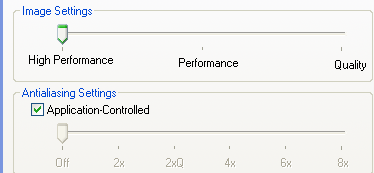
The 52.16s were manually set to the quality option and to 'best quality' in the driver subscreen.
BIOS
An overclocked system needs to place specific emphasis on the motherboard's talents. Scan has chosen ABIT's IS7 as the backbone of its midrange, enthusiast-orientated system. It's prudent to take a brief look at its BIOS. Scan allows the end user full access to the board's BIOS. Here's how it shaped up.
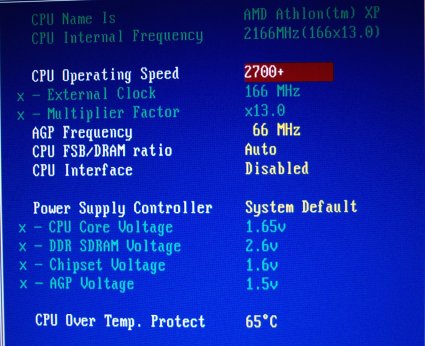
240MHz FSB represents a 20% overclock. CPU voltage is left near-default levels. The advantages of an overclocked CPU which emulates the performance of more expensive models is somewhat offset by the need to use expensive, high-speed memory modules. Scan also offers the 2.8GHz 800MHz FSB processor as an option performance upgrade for an extra £30 or so. We'd have preferred it if Scan had taken full use of the Corsair memory's speed and bumped up the final clock speed to 3.25GHz. That, however, would limit the number of usable 2.6GHz CPUs; hitting 3.25GHz at default voltage becomes far more tricky.
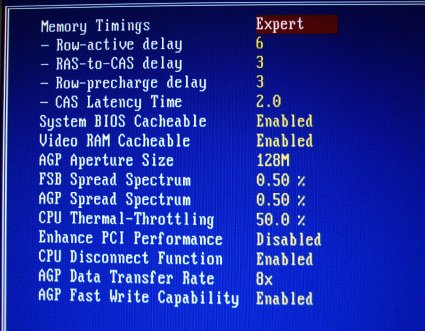
The Corsair XMS400 RAM's SPD is reckoned to be 3-7-4-4 clocks, respectively, at 240MHz Front-Side Bus. Our ABIT motherboard reviews have shown marked performance increases from using tighter latencies, especially when coupled in with the enhanced game accelerator timings. Those increases account for a Springdale board's near-Canterwood performance. Here, though, Scan's decision to leave settings to default levels will negatively impact upon benchmark numbers.
The speeds of the systems were as follows:
32707.7MHz - HEXUS comparison system - P4 3.2GHz
3126.4MHz - Scan 3XS-OC - 2.6GHz CPU @ 240.5MHz FSB
2050.2MHz - MESH Matrix 64 3200+ E-JOY
2000.1MHz - Evesham Technology Axis 64 3200+
